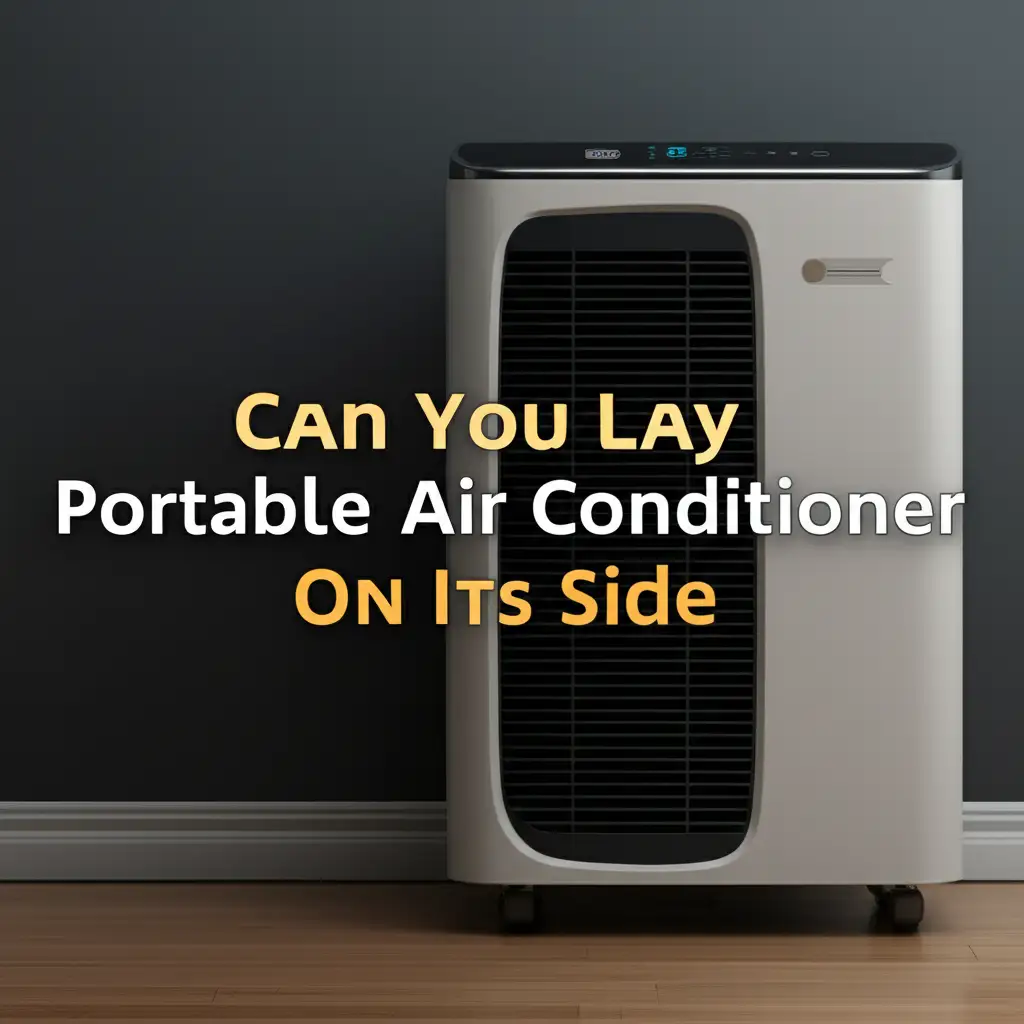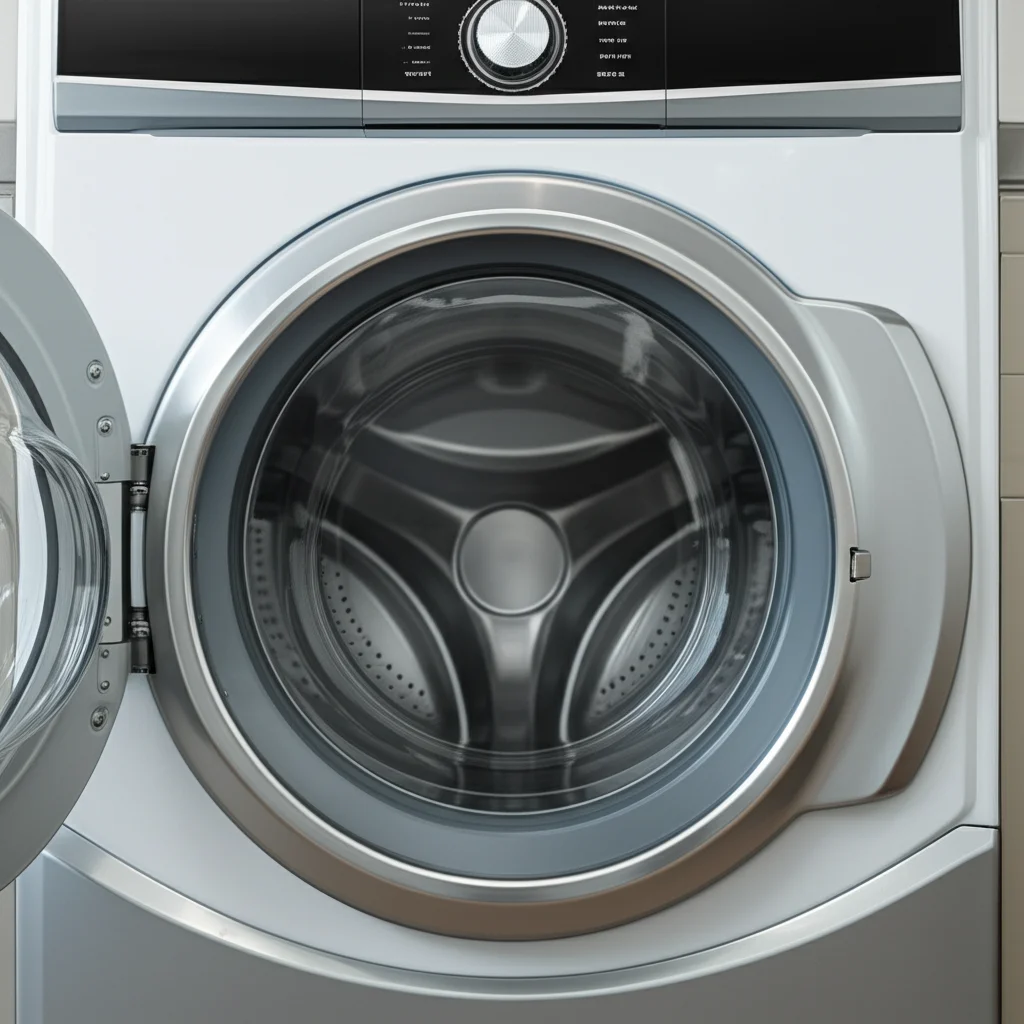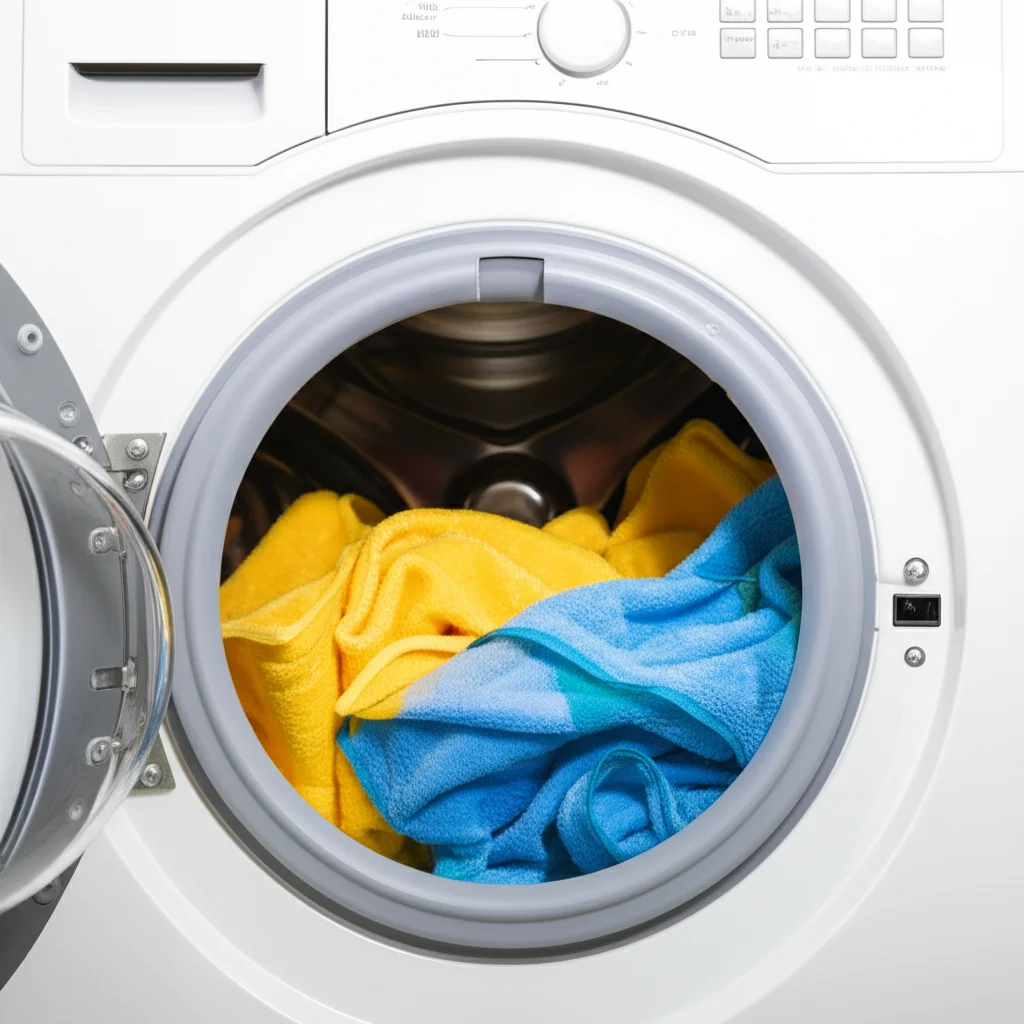· Todd Martin · Appliance Care · 18 min read
Can You Lay Portable Air Conditioner On Its Side

Can You Lay Portable Air Conditioner On Its Side: The Truth About AC Orientation
Have you ever wondered if you can lay portable air conditioner on its side? Perhaps you are moving, or space is tight in your storage area. It seems like a simple way to make the unit fit better. Many people face this common challenge when dealing with appliances.
Portable air conditioners are vital for keeping cool in many homes. Knowing how to handle them properly prevents costly damage. Improper handling can impact performance and shorten the unit’s life. This guide will explore why a portable AC’s orientation matters so much. We will discuss the risks of laying it sideways and explain the correct ways to move and store your unit. Get ready to learn the proper techniques for keeping your portable air conditioner working well.
Takeaway:
- Avoid laying portable ACs on their side. This can damage the compressor.
- Keep the unit upright during transport and storage.
- Allow several hours for oil to resettle if the unit was tilted.
- Proper handling prevents performance issues and extends lifespan.
No, you generally should not lay a portable air conditioner on its side. Doing so can cause the compressor oil to move into the refrigerant lines. This blocks proper refrigerant flow. It can lead to severe compressor damage or complete unit failure when you turn the AC back on. Always keep portable AC units upright.
Understanding Your Portable AC’s Inner Workings
To know why laying a portable air conditioner on its side is a problem, you must understand how it works. A portable AC unit is a sophisticated piece of equipment. It relies on a specific cycle to cool your space. This cycle involves several key components working in harmony.
At the core of any air conditioning system is the refrigeration cycle. This cycle uses a special chemical called refrigerant. The refrigerant changes between liquid and gas states. This change absorbs heat from your room and releases it outside. The compressor, condenser, expansion valve, and evaporator all play a part.
The Compressor and Its Lubrication
The compressor is the heart of your portable air conditioner. It takes low-pressure refrigerant gas and compresses it. This increases the gas’s pressure and temperature. The compressor is a vital mechanical part. It needs constant lubrication to work smoothly.
A special oil lubricates the compressor. This oil is usually located within the compressor’s casing. It ensures that the moving parts do not wear down. This oil is critical for the compressor’s lifespan and efficiency. Without proper lubrication, the compressor would quickly fail.
Refrigerant and Oil Flow
Refrigerant flows through a closed loop system within your AC. It moves from the compressor, through coils, and back again. The oil in the compressor is designed to stay mostly in the compressor. However, a small amount can circulate with the refrigerant. This is normal and usually does not cause problems.
When the unit is upright, gravity helps keep most of the oil in the compressor. This design relies on the unit staying vertical. Any change in orientation can disrupt this balance. Understanding this flow helps explain why tilting the unit causes issues. It is like tilting an engine and expecting the oil to stay put.
Condensate Management System
Portable AC units also manage condensate. As air cools, moisture in the air condenses into water. This water collects in a pan at the bottom of the unit. Many portable ACs have a self-evaporating system. This system uses the heat from the condenser to evaporate the water. Other units require manual draining.
If you lay the unit on its side, water in the condensate pan can spill. This water can enter electrical components. It can also cause mold growth inside the unit. Water entering the electrical system is a major safety hazard. It can cause shorts or even electric shock. Knowing how water is handled is important for safe operation. For tips on managing water, you can check articles on why is my portable air conditioner blowing out water or why is my portable air conditioner not draining water.
Why Laying a Portable AC on Its Side is Risky
Laying a portable air conditioner on its side poses significant risks. These risks affect the unit’s internal components. The damage often centers around the compressor and the refrigerant system. Understanding these specific dangers helps you avoid them.
Compressor Oil Migration
The most common and serious risk is compressor oil migration. As discussed, the compressor contains lubricating oil. This oil helps the compressor operate smoothly. When the unit is upright, gravity keeps the oil at the bottom of the compressor. This is its designated place.
If you lay the portable AC on its side, the oil can flow out. It moves from the compressor and into the refrigerant lines. These lines are not designed to carry a large amount of oil. The oil can then pool in parts of the refrigerant system. This blocks the flow of refrigerant.
Refrigerant Imbalance and Blockage
The refrigerant needs to flow freely to cool your space. Oil in the refrigerant lines can create a blockage. This blockage prevents the refrigerant from circulating properly. It can lead to an imbalance in the system’s pressure. The compressor may then struggle to push the refrigerant through.
A blocked system means your AC cannot cool effectively. It will work harder, consuming more energy. This extra strain can damage the compressor further. The unit might even stop cooling altogether. This problem often requires professional repair.
Condensate Issues and Electrical Hazards
Portable ACs produce water as they cool. This water collects in a drip pan. Many units have a self-evaporating feature or need manual draining. If the unit is laid on its side, this water can spill. The water can flow into areas it should not reach.
Spilled condensate can enter the unit’s electrical components. This can cause short circuits. Electrical shorts can damage the AC’s circuit board or wiring. In severe cases, it can create a fire hazard. Water also promotes mold and mildew growth inside the unit. This leads to bad smells and reduced air quality. Regular cleaning, including the water tank, can help prevent some of these issues. Learn more about it by visiting how to clean portable air conditioner water tank.
Structural Stress and Component Dislodgement
Beyond the internal fluids, laying a portable AC on its side can cause physical damage. These units are designed for upright operation. Their internal components are mounted to withstand gravity in a vertical position. Tilting or laying the unit flat places unusual stress on these parts.
Heavy components like the compressor can shift. Mounting brackets might bend or break. Refrigerant lines, which are often copper or aluminum, can kink. A kinked line restricts refrigerant flow. This reduces cooling performance. Such damage is often difficult or impossible to repair.
The Immediate and Long-Term Damage: What Can Go Wrong
Understanding the specific types of damage that can occur is crucial. Laying a portable AC on its side leads to issues that range from minor annoyances to complete unit failure. These problems can appear immediately or develop over time.
Compressor Failure
The compressor is the most vulnerable component. When oil leaves the compressor and enters the refrigerant lines, it causes big problems. If you turn on the AC quickly after laying it down, the compressor might run without enough lubrication. This causes immediate wear and tear. The compressor can overheat. Its internal parts can seize up. This type of failure often means the end for the entire unit. Replacing a compressor is usually as expensive as buying a new portable AC. If your unit is experiencing issues, it might also be helpful to understand why does my portable air conditioner keep tripping the breaker.
Reduced Cooling Performance
Even if the compressor does not fail immediately, performance will suffer. Oil blocking the refrigerant flow means less cooling power. The AC might blow air that is not as cold as it should be. It will struggle to lower the room temperature. You might notice the unit running constantly but not achieving the desired cooling.
This reduced performance makes the AC inefficient. It wastes energy and drives up your electricity bills. Over time, the constant strain can still lead to compressor failure. This happens because the compressor tries harder to achieve the set temperature. This is similar to how a car engine struggles if oil levels are low.
Leaks and Electrical Issues
Condensate water spilling inside the unit creates other risks. If water reaches electrical wiring or the control board, it can cause short circuits. This might cause the unit to stop working completely. It could also lead to a fire hazard. Water can also cause corrosion over time. Corroded parts lead to intermittent operation or total failure.
Refrigerant lines, if kinked or stressed, might develop leaks. Refrigerant is a specialized gas. Leaks mean the unit loses its cooling agent. This reduces performance and is bad for the environment. Refrigerant leaks require professional repair. This involves finding the leak, fixing it, and recharging the system. These repairs are costly.
Voided Warranty
Most manufacturers clearly state that improper handling voids the warranty. Laying a portable AC on its side falls under improper handling. If your unit breaks down due to oil migration or other related issues, the manufacturer will likely not cover the repair. This leaves you responsible for the full cost.
Always check your user manual for specific instructions on transport and storage. Following these guidelines protects your investment. Ignoring them can turn a small inconvenience into a significant financial burden. Be sure to read the fine print regarding warranty terms.
Proper Transportation and Storage of Portable Air Conditioners
Knowing the risks helps you avoid them. Proper transportation and storage are key to keeping your portable AC in good working order. These steps are simple but vital for the unit’s longevity.
Always Keep It Upright
The golden rule for portable air conditioners is to always keep them upright. This applies whether you are moving them across a room or across the country. The unit should remain vertical at all times. Use its wheels if it has them. If lifting, ensure you maintain an upright position.
When transporting in a vehicle, secure the unit. Use straps or bungee cords to prevent it from tipping. Place it against a wall or other sturdy objects to keep it stable. Even a short trip can cause damage if the unit falls over. Treat it like a refrigerator or other appliance that must stay vertical. For comparison, you can find information on topics like can you lay an RV refrigerator on its side.
Drain All Water Before Moving or Storing
Before any movement or long-term storage, drain all water from the condensate pan. Most portable ACs have a drain plug at the bottom. Consult your manual for exact instructions. You might need to tilt the unit slightly to get all the water out. If you do this, ensure it is only a minimal tilt, just enough for drainage, and return it to upright immediately.
Draining prevents spills and potential water damage to internal components. It also prevents mold and mildew from growing during storage. A dry unit is a healthy unit. This step is often overlooked but is very important. You can find more specific guidance on this by reading why does my portable air conditioner keep filling up with water.
Prepare for Long-Term Storage
If storing your portable AC for the off-season, follow a few extra steps. First, clean the unit thoroughly. This includes the air filters, the exterior, and draining the water. Cleaning prevents dust buildup and ensures efficient operation next season. For general cleaning tips, see how to clean portable air conditioner.
Store the unit in a cool, dry place. Avoid extreme temperatures. Cover it with a breathable sheet or the original packaging to protect it from dust. Ensure it remains upright throughout the storage period. Proper storage extends the unit’s life significantly.
What to Do If You’ve Laid Your Portable AC on Its Side
Mistakes happen. If you accidentally laid your portable air conditioner on its side, do not panic. There are steps you can take to minimize potential damage. Acting quickly and correctly is important.
Immediately Return to Upright Position
The very first thing you should do is carefully return the unit to its upright position. Do this gently. Avoid any sudden movements or dropping the unit. Once it is vertical again, secure it so it cannot tip over.
This step stops any further oil migration. It allows gravity to begin pulling the oil back into the compressor. The longer the unit stays on its side, the more widespread the oil will become in the system. Getting it upright quickly is your best defense.
Allow Sufficient Time for Oil to Settle
This is the most critical step. After returning the unit to an upright position, you must wait. Do not plug in or turn on the portable AC immediately. The oil needs time to drain back into the compressor’s reservoir. This process can take several hours.
Most manufacturers recommend waiting a minimum of 2 to 4 hours. For added safety, many experts suggest waiting 24 hours. This longer wait ensures that all the oil has settled. This gives your compressor the best chance of starting without issues. Patience here can save your appliance from damage.
Inspect for Visible Damage Before Powering On
While waiting, visually inspect the unit. Look for any signs of damage. Check the exterior for dents or cracks. Examine the power cord for fraying or exposed wires. Look at the exhaust hose and window kit for any damage.
Also, check for any signs of water leakage around the base. If you see water, dry it thoroughly before plugging in the unit. Ensure the drain plug is secure. This inspection can help identify problems before you risk electrical issues. If you notice it turning off by itself, it could be a sign of issues, learn more about it why does my portable air conditioner turn off by itself.
Test the Unit Carefully
After the waiting period and inspection, you can test the unit. Plug it in and turn it on. Listen for any unusual noises. A grinding or loud buzzing sound could indicate compressor issues. Check if it starts blowing cold air.
Let it run for 15-30 minutes. Monitor its performance closely. If it is not cooling, making strange noises, or shutting off, turn it off immediately. These are signs of potential internal damage. In such cases, it is best to contact a qualified appliance repair technician. Do not force the unit to run if it is clearly malfunctioning.
When Is It Safe to Tilt a Portable AC?
While laying a portable AC on its side is a strict no, there are rare instances where a slight tilt might be acceptable or even necessary. These situations are very specific and require careful handling. You should only tilt the unit minimally and temporarily.
For Drainage Purposes Only
Sometimes, you need to tilt the unit to fully drain the condensate water. Many portable ACs have a drain plug located at the bottom. When the water level is low, a slight tilt can help all remaining water flow out. This is usually a tilt of no more than 15-20 degrees.
When performing this tilt, ensure it is brief. As soon as the water is drained, return the unit to its full upright position. Do not leave it tilted for extended periods. This short tilt minimizes the risk of oil migration. Always ensure the unit is unplugged before attempting to drain water.
Minimal Tilt for Cleaning Access
In some cases, a very slight tilt might give you better access for cleaning. For example, if you need to reach a specific area under the unit, a minor tilt could help. Again, this must be minimal. The unit should never be on its side or back.
Any tilting for cleaning should be momentary. It is not about sustained orientation. Always return the unit to a stable, upright position immediately after accessing the area. This ensures the internal fluids return to their correct places. Always prioritize cleaning when the unit is completely powered off.
Never for Transport or Storage
It is never safe to tilt a portable AC for transport or long-term storage. Even a prolonged slight tilt during transit can cause problems. The vibrations of a vehicle combined with a tilt can make oil migration worse. The safest approach for transport and storage is always keeping the unit perfectly upright.
Remember, the goal is to protect the compressor and the refrigeration system. Any prolonged deviation from the upright position increases the risk of damage. When in doubt, keep it straight. Your appliance will thank you for it with years of reliable cooling.
Preventative Measures and Best Practices for AC Longevity
Taking a few proactive steps can greatly extend the life of your portable air conditioner. These best practices focus on proper care, maintenance, and handling. Following these guidelines ensures your unit provides reliable cooling for years.
Read Your User Manual
The best source of information for your specific model is its user manual. Every portable AC unit might have slightly different requirements. The manual will detail proper handling, maintenance schedules, and troubleshooting tips. It also specifies warranty information and what voids it.
Before doing anything with your AC, take a few minutes to read the manual. It can prevent costly mistakes. This small effort saves you time and money in the long run. The manual is designed to help you care for your appliance correctly.
Regular Maintenance and Cleaning
Routine cleaning is vital for efficiency and longevity. Dust and dirt can accumulate on coils and filters. This reduces airflow and makes the unit work harder. Clean your air filters every few weeks or months, depending on usage. Most filters are washable.
Also, regularly check and clean the coils if accessible. A dirty unit struggles to cool. It uses more energy and puts strain on the compressor. Keeping the unit clean prevents common performance issues and extends its lifespan. Proper cleaning can also help prevent issues like constant water filling, which can be seen on pages like why does my portable air conditioner fill with water quickly.
Proper Installation
Install your portable AC unit correctly. Ensure the exhaust hose is properly vented to the outside. A poor vent setup makes the unit less efficient. It can also lead to overheating. Make sure there is enough space around the unit for proper airflow. Do not block the air intake or exhaust vents.
Proper installation ensures the unit operates within its design parameters. This reduces stress on the compressor and other components. It helps your AC cool effectively without unnecessary wear. Incorrect venting can cause the unit to struggle.
Professional Servicing
Consider professional servicing every few years. A technician can check refrigerant levels. They can also inspect electrical components and ensure everything is running optimally. They can spot small issues before they become major problems.
Professional service can extend your unit’s life significantly. It ensures peak performance and energy efficiency. It is an investment in the long-term health of your portable AC. Think of it as a tune-up for your cooling appliance.
FAQ Section
Q1: How long should I wait to turn on my portable AC if it was laid on its side?
A1: You should wait at least 2 to 4 hours after returning your portable AC to an upright position. For best safety and to ensure all compressor oil has settled, waiting 24 hours is highly recommended. This allows gravity to pull the lubricating oil back into the compressor’s reservoir before operation.
Q2: Can I store my portable AC on its back?
A2: No, you should never store a portable air conditioner on its back. This position is just as risky as storing it on its side. It allows compressor oil to migrate out of the compressor and into the refrigerant lines. Always store your portable AC unit upright to prevent internal damage.
Q3: What if I only tilted my portable AC briefly?
A3: A very brief, minimal tilt (e.g., to drain water) might not cause immediate damage. However, it is still best practice to allow the unit to sit upright for at least an hour or two afterward. For any tilt beyond a few seconds, waiting 2 to 4 hours is safer before turning it on.
Q4: Will my warranty be void if I lay my portable AC on its side?
A4: Yes, in most cases, laying a portable air conditioner on its side will void the manufacturer’s warranty. Manufacturers design these units to operate and be transported upright. Any damage resulting from improper handling, such as laying it flat, is typically not covered by the warranty.
Q5: Can I transport a portable AC in my car lying down if it’s new and still in the box?
A5: Even if new and in the box, a portable AC should always be transported upright. The original packaging is designed to protect it from external damage during shipping, not to change the internal fluid dynamics if laid flat. Always transport the unit in an upright position.
Conclusion
You now know the clear answer: you cannot lay portable air conditioner on its side without significant risk. This simple action can lead to serious damage. It primarily affects the compressor, its lubricating oil, and the delicate balance of the refrigerant system. Compressor oil migration is the main culprit. It blocks refrigerant flow and can cause the compressor to fail.
Always ensure your portable AC remains upright during transport and storage. If you accidentally lay it on its side, act quickly. Return it to an upright position. Then, be patient and allow plenty of time for the oil to resettle. This crucial waiting period minimizes the risk of damage. Performing regular maintenance and following your unit’s manual will ensure its long life. By understanding these simple guidelines, you can protect your investment. You will enjoy cool comfort from your portable air conditioner for many years to come.





